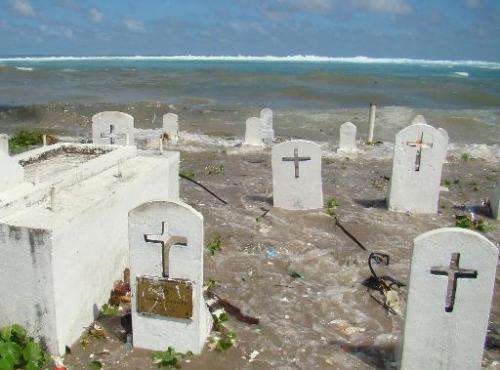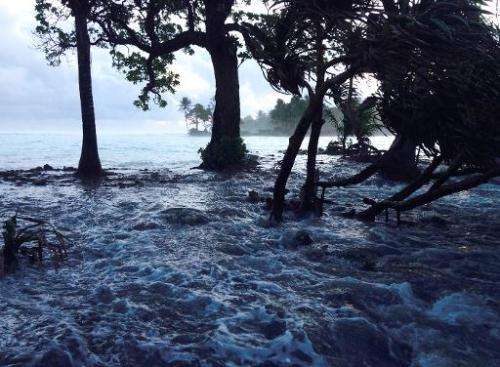Rising sea levels unearth 'WWII Japan soldiers' in Pacific

The skeletal remains of what are believed to be Japanese soldiers have been exposed on a remote Pacific island where rising sea levels have eroded the seashore, Japanese and local officials said Monday.
The bodies of around 20 men have emerged from the earth at a small coastal cemetery because of the action of the ocean on the Marshall Islands, a place scientists have long warned is vulnerable to rising sea levels caused by climate change.
"The government of the Marshall Islands has informed us that remains of about 20 human bodies have been exposed on the seashore of Enniburr island," said a Japanese official, referring to one of the small islands that forms part of the Pacific nation.
"The remains, believed to be those of Japanese soldiers, surfaced after waves eroded a cemetery built on the seashore, according to the Marshall Islands government," he said.
Annual peak tides in February and March have caused heavy shoreline damage in Majuro, Kwajalein and other atolls in the Marshalls in recent years, exposing graves and damaging houses.
In 2008, a cemetery on the Majuro shoreline was badly damaged when it was battered by high tides and ocean surges.
The low-lying Marshall Islands, a Pacific atoll chain that sits barely a metre above sea level, announced plans at the time for a wall to hold back rising seas.
Japanese artefacts
"The remains appear to all be male between the ages of 18-40 and strongly appear to be of Asian descent," Michael L. Terlep, chief archaeologist at the Marshall Islands Historic Preservation Office, told AFP on Monday.
"This is supported by the Japanese artefacts at the site (including a soy sauce bottle, military buttons, and Japanese coins) as well as historical data that suggest United States forces confronted Japanese resistance at the northern end of Enniburr."

The Marshall Islands, like other Pacific island nations, are increasingly being threatened by rising sea levels, which have left previously safe parts of the shore at risk from erosion.
"In the tropical western Pacific where a large number of small island communities exist, rates (of sea-level rise) up to four times the global average (approximately 12 millimetres a year) have been reported between 1993 and 2009," according to the Intergovernmental Panel on Climate Change (IPCC).
"It is important to note... rising sea level will incrementally increase the rate and extent of erosion in the future," added the report, which was issued in March.
Japan controlled the Marshall Islands from 1914 until the final stages of the war, when they were taken by the United States.
The island country, made of more than two dozen atolls, became independent in 1986, but part of it—Kwajalein Atoll, where Enniburr island also sits—remains under the control of the US military, the Japanese official said.
"Japan will probably send a research team for the exposed human remains, but no concrete plan has been made yet since it is under the management of the US military," he said.
Japan has for decades been trying to retrieve the remains of millions of Japanese nationals—including soldiers—scattered throughout the Asia-Pacific, swathes of which were controlled by the Japanese military until the later years of World War II.
© 2014 AFP




















